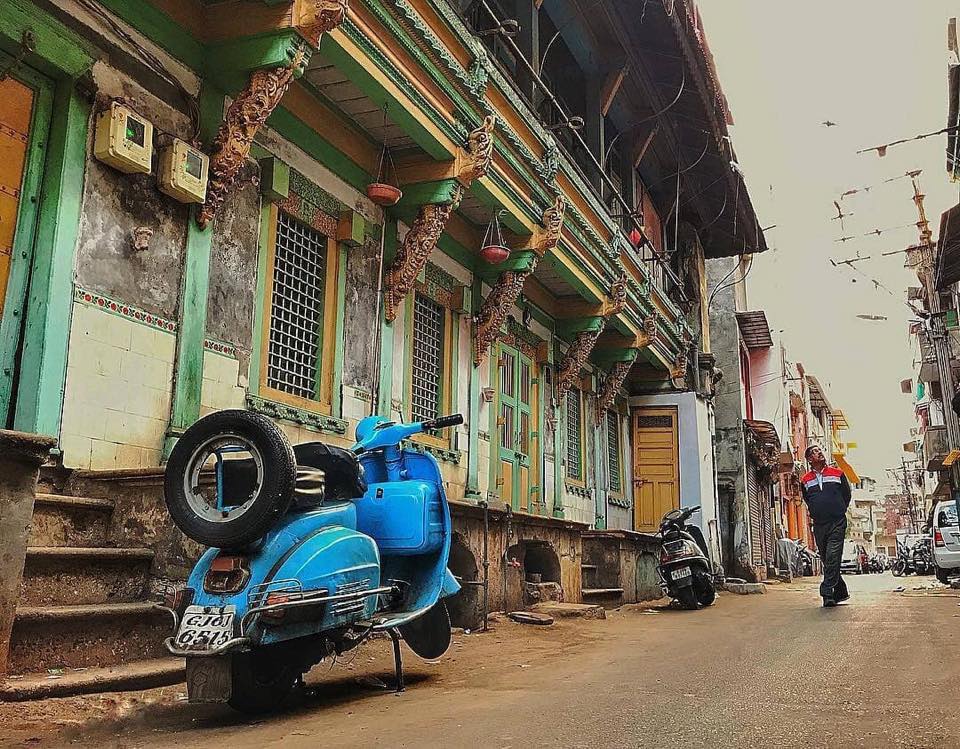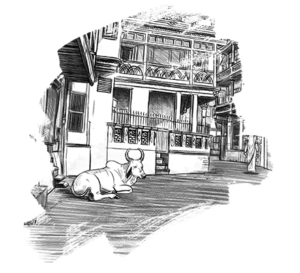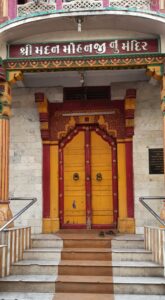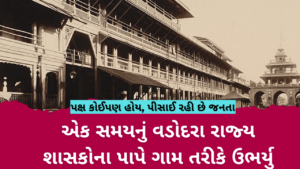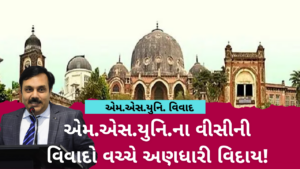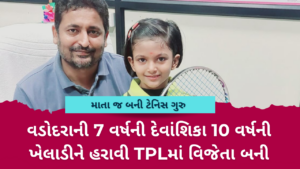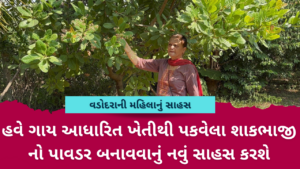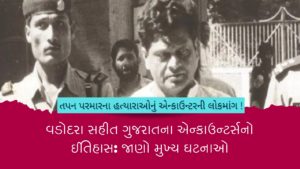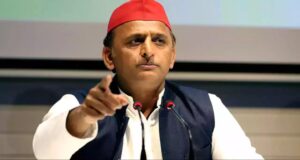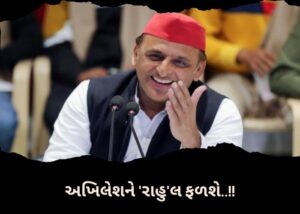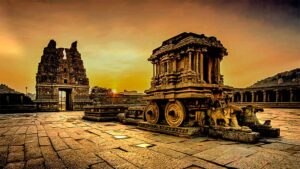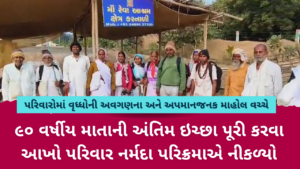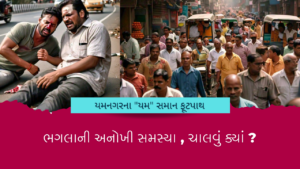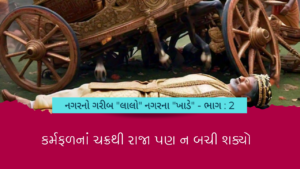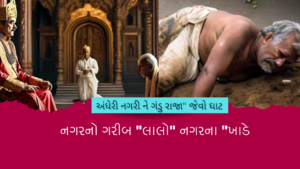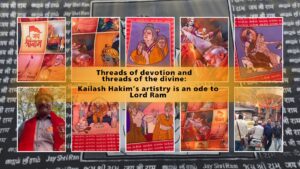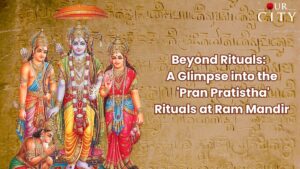Meandering through the narrow lanes, appreciating the beautiful chaos of cluster of houses and becoming a part of the local tales is the best segment of exploring the pols located mostly in the central part of the old city. As one strolls through the char darwaazas, one would witness many settlements in the tiny lanes, these are known as pols.
Each pol houses a group of people generally belonging to the same community and practicing a similar profession. The name of pols is derived from the occupation, caste, renowned person, thing, specie of a tree or animal that reside or has history with that lane. There are around 63 pols in Vadodara which we will be exploring. We thought of beginning the journey with the most sacred pols of all; The Narsinhji ni Pol.
Etymology
This lane accommodated Dasha Dishaval Vanik community as well as a few Jains in the past. Hence the pol was first known as Vanik ni Pol. Few years later, post excavating the deity of Shri Madan Mohanji, a temple was made in his name and the pol also changed its name to Madan Mohan ni Pol. Finally, with the entry and grandeur of one of the Vishnu avatars; Lord Narasimha, the pol got its name from his name; Narsinhji ni Pol.
Richness of any place resides in its old city. Its ancient and medieval structure oozes the heritage value and its flag bearers; the residents of old city breathe in the courage of preserving this legacy. With a motive of its conservation, documentation of the living culture of this place is of utmost importance.
While entering in the Narsinhji ni Pol, one would feel calm and composed. The entire circumambulatory path of this pol comprises of six beautiful temples attached with an interesting history. Out of six, five of them are Hindu temples; Madan Mohanji nu Mandir, Siddheshwari Mata nu Mandir, Mota Narsinhji nu Mandir, Nana Narsinhji nu Mandir and Sharneshwar Mahadev nu Mandir, while one is the Parshwanath Jain Derasar.
Exploring the story of temples
Madan Mohanji nu Mandir
It was 500 years ago that a group of people were digging the land for finding water. While tunnelling, they heard a voice from inside, they were scared and thought that might be a demon. They repeated digging after a few days, same voice emerged from below. Two of them pleaded if the voice could come out and demand what they were looking for. The deity emerged from the land and requested its owner to accept him as his lord and worship him. That was Lord Madan Mohanji.
He is a form of Krishna who is not ‘Mad’an (Indolent) or has ‘Moh’an (Illusion). The temple was made in his name and is maintained by people from the same Dave family since many generations. “The deity here cannot be lifted single handedly as its 40-50 kgs,” says Jagadishbhai Dave, Mukhiya of the Temple. They worship three deities here; Madan Mohanji, Balram (his brother) and Swaminiji (Lord’s wife). “One of the most peculiar thing about the Swaminiji is, it was made in brass by the Kansaras who resided in the Kansara pol,” confirms Dave. Many Pushtimarg acharyas visit this temple on auspicious occasions. The walls of the temple has the paintings of Krishna Leela and Shrinathji.
Siddheshwari Mata nu Mandir
Major residents of this pol belonged to the Dasha Dishaval Vanik community. Siddheshwari Mata is the Kuldevi of this community. “It was the people of Dasha Dishaval who had built this temple as the main kuldevi temple was faraway,” says Kirti Parikh, resident of Narsinhji ni Pol and a heritage enthusiast. This temple is completely transformed and remodelled.
Mota Narsinhji nu Mandir
It is the tenth generation of Shri Harjivandas Bapu who is still looking after this temple. There is an interesting story of the idol of Lord Narsinhji who is worshipped here since more than 290 years. Harjivandas Bapu used to go for satsang to a sant at Tulsiwadi. After winning the sant’s confidence, he was gifted with a two Shaligrams, which is considered as the embodiment of Lord Vishnu. While gifting him the Shaligrams, three vows were taken as a promise. First was that on every Dev Diwali Lord should be taken to Tulsiwadi for Tulsi Vivah, second was that the akhand divo must be lighted as it is forever and third was to daily offer kori sukhdi popularly known as Narsinh lot.
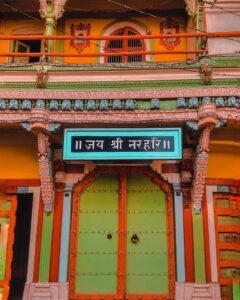 Popularly known as ‘Narsinhji no varghodo’, the first vow is fulfilled every year with a huge procession of Lord’s wedding with the plant goddess Tulsi. “People from around the world book their flight tickets to attend it,” says Parikh.
Popularly known as ‘Narsinhji no varghodo’, the first vow is fulfilled every year with a huge procession of Lord’s wedding with the plant goddess Tulsi. “People from around the world book their flight tickets to attend it,” says Parikh.
The second vow also has a story attached to it. It is said that Maharaja Anandrao Gaekwad arranged some expenses of temple like Ghee Lamp, which was total of Rupees 1550 per year. There is also a big and beautiful Deep Mala (lamp tower) which is used to light lamps. The lamp tower was constructed in the Year 1860 by Maharaja Khanderao Gaekwad. It is said that the members of the royal Gaekwad family used to have dinner only after having darshan of the lamp lit at the top of the lamp post everyday which was seen from Sarkar Wada (The Maharaja’s Palace).
There is a small story related to Temple with Maharaja Sayajirao Gaekwad. The Maharaja prayed to Narsinhji when his ship had to battle a storm in deep sea. After the battle fight, when Maharaja returned, he firstly ran to the temple before entering the palace.
Nana Narsinhji nu Mandir
Every year ‘Narsinhji no varghodo’ is carried out with grandeur. The Lord is placed in a palki post which he is taken around the city. As we know that any Indian festival is incomplete without a story. This palki also has a story which has relevance with the Nana Narsinhji.
Many years ago, it so happened that the palki was all set to go, but when the usual four people came to lift it, they failed. Even with 50 people’s help, they couldn’t move it. That’s when it occurred to one person that like every year the smaller shaligram was not placed in the palki. It was only after placing the smaller shaligram in the palki that they were able to lift it.
Sharneshwar Mahadev nu Mandir
The exact date of this temple is not known. Though it is believed that the shivalinga worshipped here was also worshipped by the Pandavas during their vanvas. The one who takes care of the temple belongs to the 13th generation of the family who has been serving their duty at this temple. “All 12 jyotirlingas are present in here,” says Hansa Pathak aka Mamuji, who serves the god as well takes care of the temple.
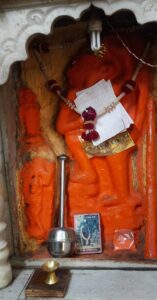
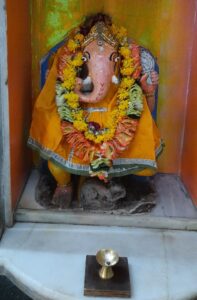
There are many peculiar features of this temple. Deity of Ganeshji and Hanumanji are on the same side while they are also placed opposite to each other. Iconography of both the idols is also fascinating as the trunk of Ganpati is on the right and the Shani below Hanumanji is also below the right feet. Parvati, Shiva’s consort holds Shivalinga in one hand and Ganpati in the other while there is Wagheshwari devi on one side and Maa Ambika on the other side. These are few of the uncommon iconographies to be found in the Shiva temple.
Parshwanath Jain Derasar
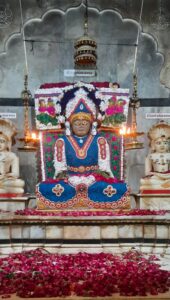 It is the most peaceful corner of the pol. The intricate marble carvings and the magnificent newly made structure is worth the time. The inside of the temple walls and roof are decorated with attractive paintings. There are also many sculptures and animals carved in silver. The most important thing about this temple is its idol. “The Mahavir murti (dated 5000 years) had been found from Bhutdizhanpa,” confirms Parikh. The idol is made of sandstone. The Derasar also houses various other acharyas and tirthankaras.
It is the most peaceful corner of the pol. The intricate marble carvings and the magnificent newly made structure is worth the time. The inside of the temple walls and roof are decorated with attractive paintings. There are also many sculptures and animals carved in silver. The most important thing about this temple is its idol. “The Mahavir murti (dated 5000 years) had been found from Bhutdizhanpa,” confirms Parikh. The idol is made of sandstone. The Derasar also houses various other acharyas and tirthankaras.
The nostalgic pol residents
While walking in Narsinhji ni Pol few steps ahead of the Madan Mohanji’s Temple, one would find this stunning structure which is well preserved since past 200 years. There are complexly carved wooden brackets painted with the pastel pallet. While walking in the mansion, one would also find various old painting prints of Raja Ravi Verma. “This house belonged to a Zhaveri before my grandfather bought it,” says Deepak Pandit, owner of this mansion. His grandfather held a reputed position during the Gaekwad rule and often travelled to Bombay for work.
There are a few blessed souls while a few are finding it hard to make both the ends meet. “We have rented this house since past 49 years and the owners are now threatening us to leave this place,” shares Sarlaben (name changed), a pol resident. She further said that their financial condition is not allowing them to buy a new place and hence they had filed a case against the owners at the High Court which they won.
A good number of people have shifted to this pol from different regions of Gujarat, reason unknown. “We have shifted here from Saurashtra. My great grandfather had settled here,” says Kishorebhai Parmar. He owns a tailor shop since 1953 and a house in the pol. It is only him who chose tailoring while his ancestors were popular for carpentry.
This was a brief sneak peek into Narsinhji ni Pol.

